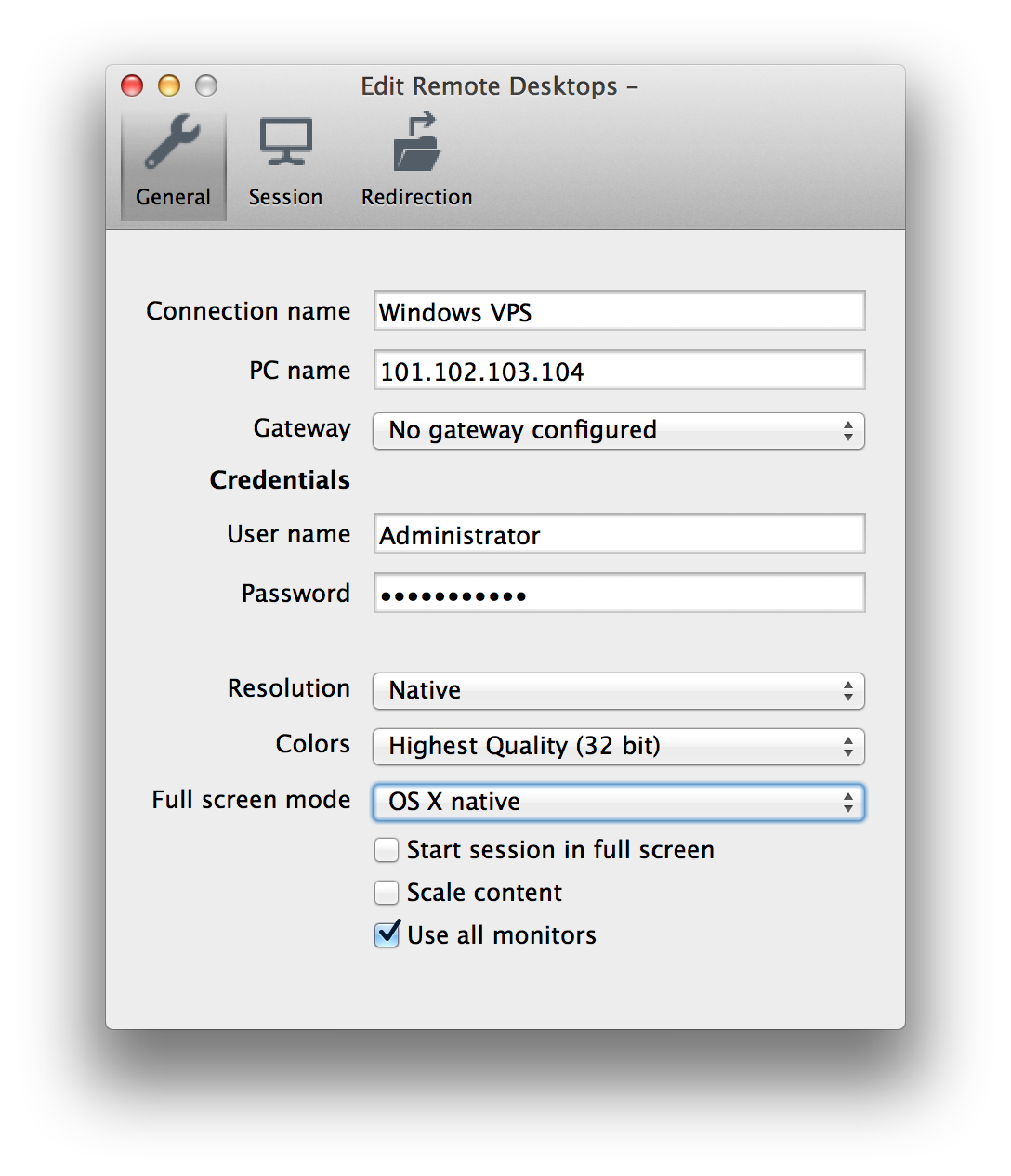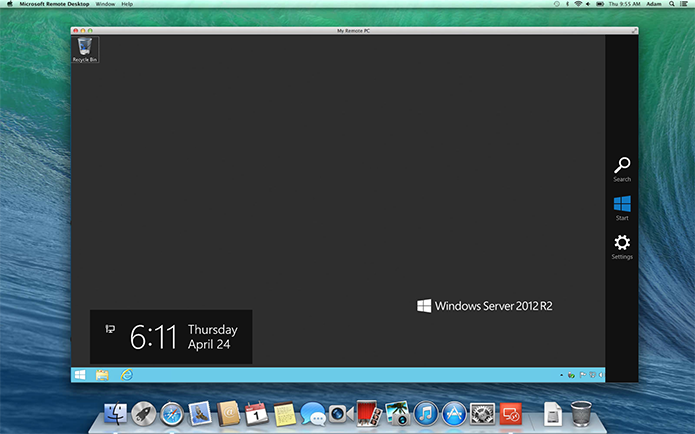


That’s it! Now you should see the desktop of your remote virtual server:

You might see a warning like the one below, “The server name on the certificate is incorrect.” This is OK, and usually means that you are connecting directly to the virtual server’s IP address (rather than hostname), or your local computer does not have the remote certificate downloaded (not required). The username is often “Administrator”, and you can leave the ‘Domain’ field empty in most cases. Open RDC and enter the IP Address of your RDP VPS or server when prompted for ‘Computer’:Īt the next prompt, enter your server login information. Whichever client you choose, the connection process will be similar. We think CoRD is possibly the best RDP client for Mac users, but we will demonstrate a connection to a Windows VPS with Microsoft RDC. We also recommend the open-source application CoRD for OS X, which can be downloaded from here (Sourceforge). It includes a few new features, and support for Microsoft RemoteApp: In addition, there is a newer of Microsoft RDC for OS X 10.7 and above, though it must be downloaded directly from the App Store in OS X. Configure sound play-through and advanced session settings.RDC for Mac supports all the same RDP features as Windows 8 and Windows 7 clients: We have mirrored it here for convenience : Mac RDP Downloads The client update for Windows Embedded Standard 2009 and POSReady 2009 supports the same RDC 7.0 features introduced in Windows 7 and Windows Server 2008 R2 and available on Windows XP SP3.
#Rdp client for mac 7.0 for mac os x
The best option for Mac OS X users to connect to remote Windows Servers, is to download the official Microsoft RDC for Mac application. The Remote Desktop Connection 7.0 client and related features are now supported on Windows® Embedded Standard 2009 and Windows Embedded POSReady 2009. There is no lack of support for RDP/RDC (Remote Desktop Connection) on Mac OS X.


 0 kommentar(er)
0 kommentar(er)
